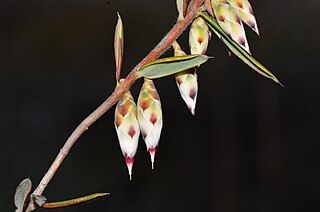
Conostephium hortiorum is a species of flowering plant in the family Ericaceae and is endemic to the south-west of Western Australia. It is a spreading shrub with linear, narrowly elliptic or narrowly triangular sharply-pointed leaves and pendulous, spindle-shaped, straw-coloured and dark purple flowers.
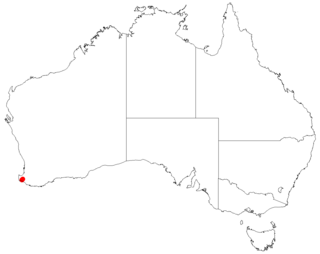
Leucopogon incisus is a species of flowering plant in the heath family Ericaceae and is endemic to a small area in the far south of the south-west of Western Australia. It is a delicate, erect or sprawling shrub with glabrous young branchlets, spirally arranged, erect, narrowly egg-shaped to narrowly elliptic leaves, and white or pale pink, narrowly bell-shaped to more or less cylindrical flowers.
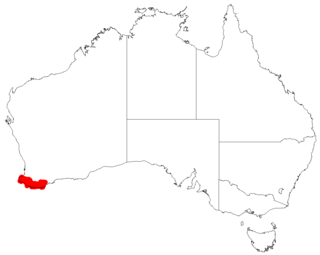
Leucopogon interstans is a species of flowering plant in the heath family Ericaceae and is endemic to the south-west of Western Australia. It is an erect shrub with brownish hairs on its young branchlets, erect, narrowly elliptic or narrowly egg-shaped leaves and white or pinkish flowers in groups in upper leaf axils or on the ends of branches.
Conostephium laeve is a species of flowering plant in the family Ericaceae and is endemic to the west of Western Australia. It is a compact shrub with erect, narrowly elliptic or narrowly egg-shaped leaves with the narrower end toward the base, and pendulous, spindle-shaped, cream to straw-coloured and pink flowers.

Conostephium magnum is a species of flowering plant in the family Ericaceae and is endemic to the south-west of Western Australia. It is an erect, compact shrub with scattered lance-shaped leaves with the narrower end toward the base, and pendulous, spindle-shaped, cream-coloured to white and pink flowers arranged singly in leaf axils.
Conostephium papillosum is a species of flowering plant in the family Ericaceae and is endemic to the south of Western Australia. It is a compact shrub with erect, narrowly elliptic or narrowly egg-shaped leaves with the narrower end toward the base, and pendulous, spindle-shaped, cream to straw-coloured and dark purple flowers.

Leucopogon maritimus is a species of flowering plant in the heath family Ericaceae and is endemic to the west coast of Western Australia. It is a low, spreading shrub with hairy young branchlets, erect, narrowly elliptic leaves and erect white, tube-shaped flowers in upper leaf axils or on the ends of branches.
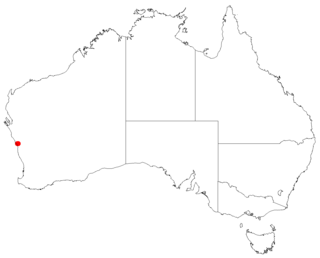
Leucopogon navicularis is a species of flowering plant in the heath family Ericaceae and is endemic to the southwest of Western Australia. It is an erect, compact shrub with hairy young branchlets, narrowly elliptic to narrowly egg-shaped leaves and erect, compact clusters of 4 to 12 white, bell-shaped flowers in upper leaf axils or on the ends of branches.

Leucopogon prolatus is a species of flowering plant in the heath family Ericaceae and is endemic to the south-west of Western Australia. It is an erect, open shrub with a single stem at ground level, egg-shaped to elliptic leaves and erect clusters of 3 to 14 white flowers on the ends of branches and short side-branches.

Leucopogon spectabilis is a species of flowering plant in the heath family Ericaceae and is endemic to inland Western Australia. It is a narrow, erect shrub with few glabrous branchlets, narrowly elliptic leaves and relatively large white flowers arranged in 14 to 32 upper leaf axils.

Leucopogon tenuicaulis is a species of flowering plant in the heath family Ericaceae and is endemic to the far southwest of Western Australia. It is an erect or sprawling shrub with thin stems, upright triangular to narrowly egg-shaped or narrowly elliptic leaves and erect, white or pale pink, tube-shaped flower arranged in large groups on the ends of branches and in upper leaf axils.
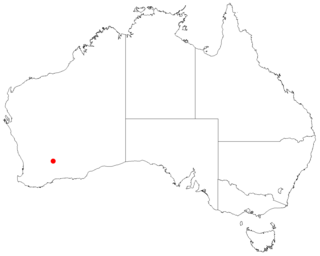
Leucopogon validus is a species of flowering plant in the heath family Ericaceae and is endemic to a restricted part of the south-west of Western Australia. It is a robust shrub with glabrous branchlets, narrowly elliptic leaves and white, bell-shaped flowers arranged in six to twelve upper leaf axils and on the ends of branches.
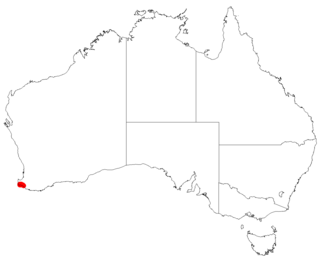
Leucopogon wheelerae is a species of flowering plant in the heath family Ericaceae and is endemic to the far south-west of Western Australia. It is a sprawling shrub with slender, glabrous young branchlets, more or less erect, egg-shaped or broadly egg-shaped leaves, and white, broadly bell-shaped flowers with white or pale pink lobes.
Styphelia chlorantha is a species of flowering plant in the heath family Ericaceae and is endemic to a small area of Western Australia. It is a low, spreading shrub with erect, narrowly egg-shaped to egg-shaped leaves with the narrower end towards the base, and green, tube-shaped flowers arranged singly in leaf axils.
Brachyloma elusum is a species of flowering plant in the family Ericaceae and is endemic to a two locations in the west of Western Australia. It is an erect, compact shrub with linear to narrowly egg-shaped leaves with the narrower end toward the base, and red, tube-shaped flowers.
Brachyloma pirara is a species of flowering plant in the family Ericaceae and is endemic a restricted area in the west of Western Australia. It is an erect, compact shrub with sharply-pointed, linear to narrowly egg-shaped or narrowly elliptic leaves, and red, tube-shaped flowers.
Brachyloma stenolobum is a species of flowering plant in the family Ericaceae and is endemic to a restricted area in the west of Western Australia. It is an erect, compact shrub with narrowly elliptic or elliptic leaves, and white, tube-shaped flowers.
Styphelia deserticola is a species of flowering plant in the heath family Ericaceae and is endemic to inland Western Australia. It is an erect shrub with sharply-pointed, narrowly egg-shaped leaves and white or pale cream-coloured, tube-shaped flowers usually arranged in groups of 2 or 3 in leaf axils.
Styphelia quartzitica is a species of flowering plant in the heath family Ericaceae and is endemic to a small area in the south of Western Australia. It is an erect shrub with hairy young branchlets, sharply-pointed, linear or very narrowly egg-shaped leaves, and cream-coloured, tube-shaped flowers.
Styphelia saxicola is a species of flowering plant in the heath family Ericaceae and is endemic to inland Western Australia. It is an erect shrub with sharply-pointed, linear or very narrowly elliptic leaves and white or pale cream-coloured, tube-shaped flowers usually arranged in groups of 2 or 3 in leaf axils.











